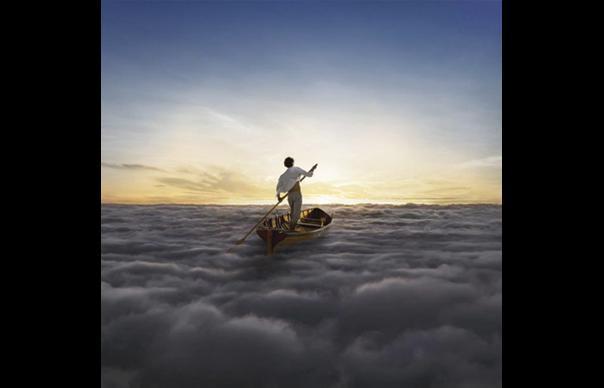Andy Jackson has good memories of the Division Bell sessions. As Pink Floyd’s long-standing engineer, Jackson was present when Gilmour, Wright and Mason convened at Astoria, after a week’s jamming at Mason’s Britannia Row studios, in early 1993. “The idea was to try and find kernels for songs,” he explains. “That was the way they had always worked, up until I suppose The Wall and maybe even Animals. It was a very deliberate attempt to try and get back to that ethos, because they felt it gave them something they didn’t get by going off into separate corners and writing. It was recorded in a very minimalistic way. Just a handful of mics. They fed into a DAT machine sitting by David and as soon as anything started happening that was good, he’d just press record.”
As Jackson remembers, “a pile of tapes of jams” was brought to Astoria and a sifting process began, with the band, producer Bob Ezrin and Jackson whittling down a list of over 60 pieces of music to the nine that became The Division Bell.
“Initially, we had considered making The Division Bell as a two-part record,” says Mason. “Half to be songs, and the other a series of ambient instrumental pieces. Eventually, we decided to make it a single album and inevitably much of the preparation work remained unused.”
https://www.youtube.com/watch?v=41O2PmucBn4
“I took it upon myself to make ‘The Big Spliff’,” admits Jackson, on his early attempts at compiling an ambient companion LP, “which was just a comical title I came up with. It never got thought about again, really.” These remaining tapes were assiduously catalogued in Gilmour’s warehouse. “It has a huge tape store,” Jackson reveals. “Fortunately, we’re very anal about that. We library everything, even hardware. We’ve still got the computer we did those sessions on.”
Jackson described the material as ranging from “undeveloped” to “psychedelic instrumental noodles” comparable to the middle section from “Echoes”. The tapes – marked functionally as “DAT 1, piece 7”, “Brit Row 1” or perhaps with the slightly more descriptive “Ebow noodle” – remained in Gilmour’s tape store, untouched. Meanwhile, Pink Floyd ended their Division Bell Tour on October 29, 1994 at Earl’s Court and entered into what Mason wryly describes in his autobiography Inside Out as “a significant cessation of activity”. Nevertheless, Gilmour called on Wright for his 2006 album On An Island and, critically, the subsequent tour.
“They had a great time,” says Andy Jackson. “They hadn’t been onstage together for an awfully long time. Particularly smaller stages, not the humungadomes. Doing a theatre tour, they can see the whites of each other’s eyes. Things like that middle bit of ‘Echoes’, where they’re trading licks, they’re looking at each other and getting that spark again. David was really full about how much he enjoyed playing with Rick again, how special it was. In some ways, with Rick coming back into the fold after not having been involved in The Final Cut at all, then the remoteness of the whole thing when it got so huge, then finding it again, it was almost like a second honeymoon.”
Phil Manzanera, the Roxy Music guitarist who co-produced On An Island and played on the live shows, recalls witnessing a warm moment between Gilmour and Wright at the end of the tour. “We played in Gdansk, at the shipyard, the biggest gig of David’s solo tour. We played ‘Echoes’. I only know this because I ended up mixing the live album from that tour and choosing the tracks we’d recorded and all the different gigs, but that night the version was 20 minutes long. The interplay between him and David… Rick was so happy. He was right back at the top of his game, and I looked round and saw him playing away and David answering on guitar. That was the most spectacular version of ‘Echoes’. People loved it on that tour.”
“It wasn’t that long after the tour that Rick died,” continues Jackson. “I think David was really aware of what he’d lost, personally but also musically. In some ways, that became the seed that led to this album. ‘There won’t be any more Rick, but there is a bunch of material we’ve got from the past that we never used…’ I think that was the spark that grew into David saying, ‘Shall we see what we’ve got?’”


